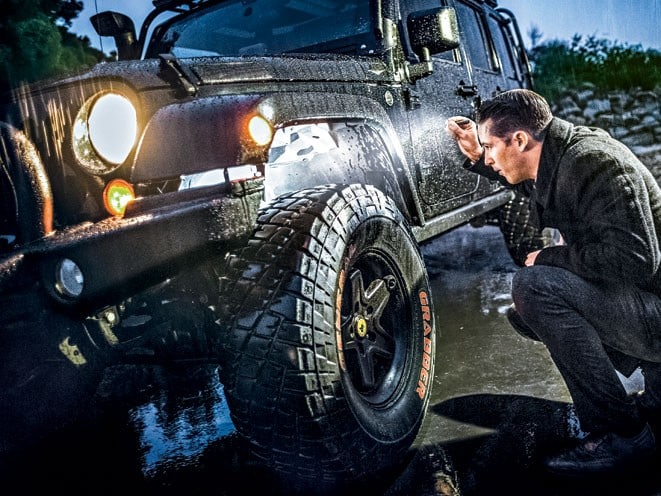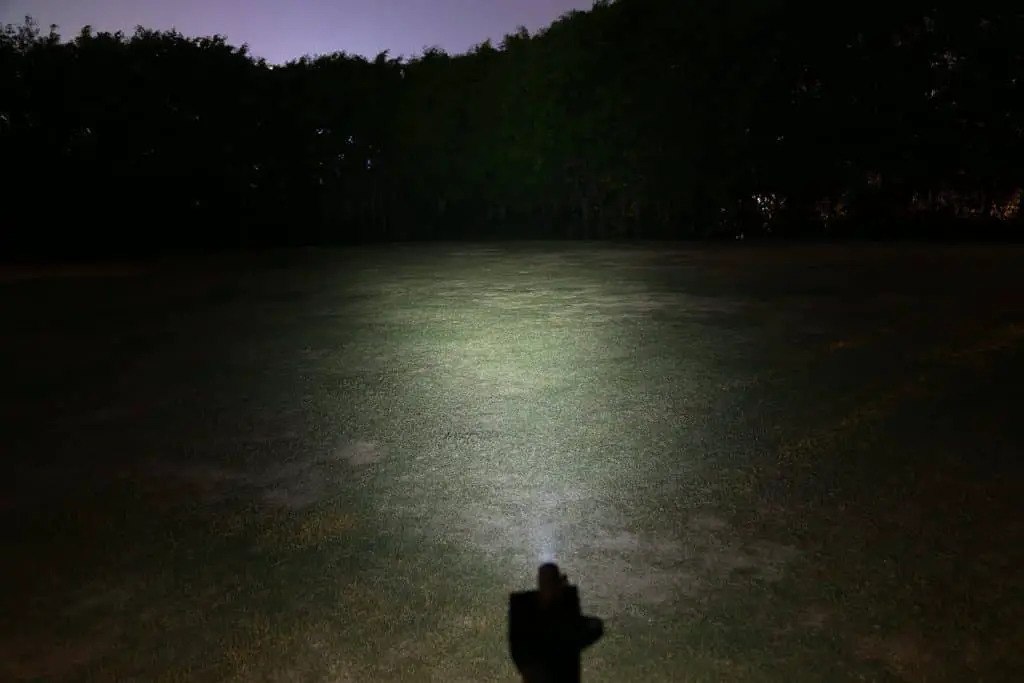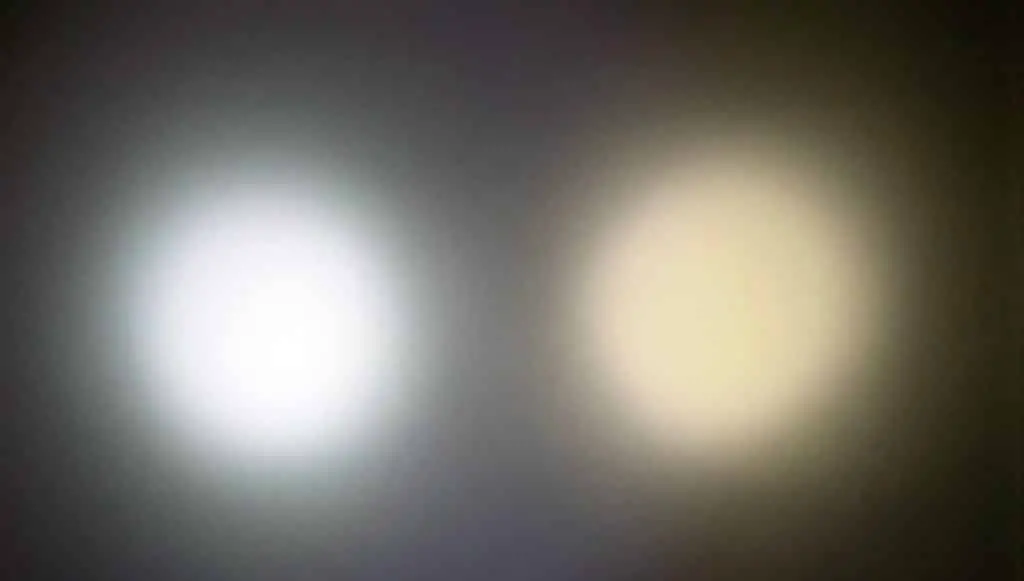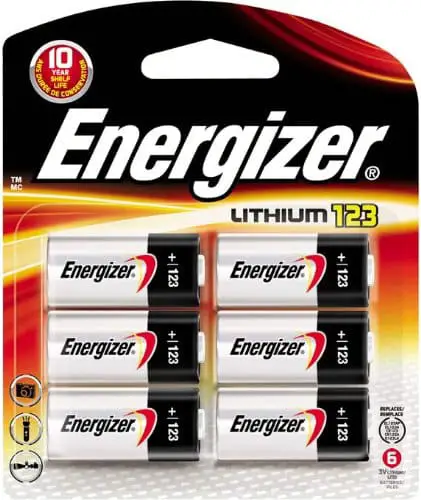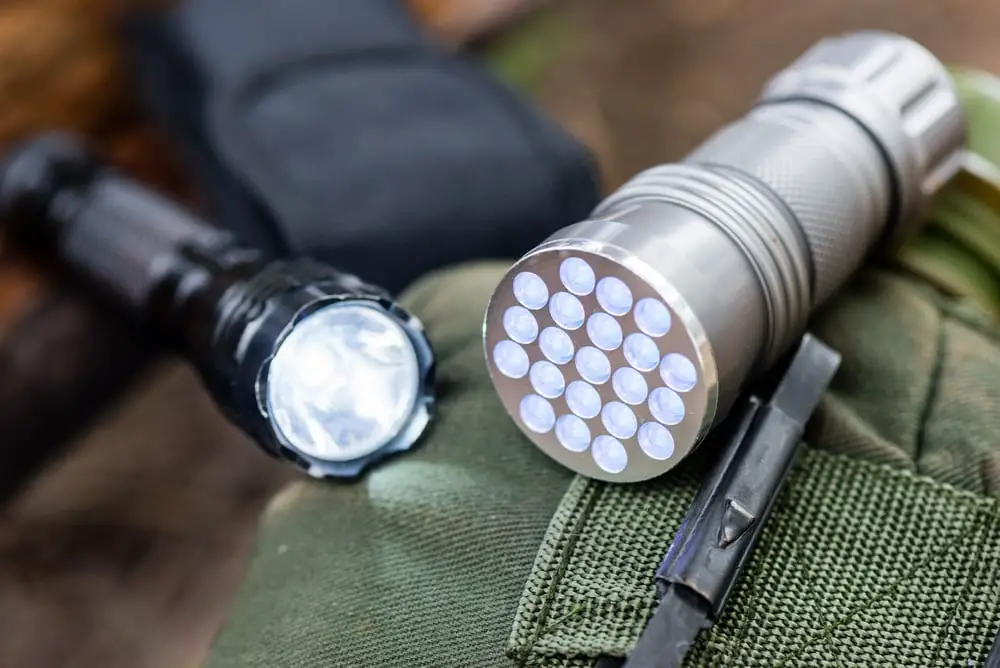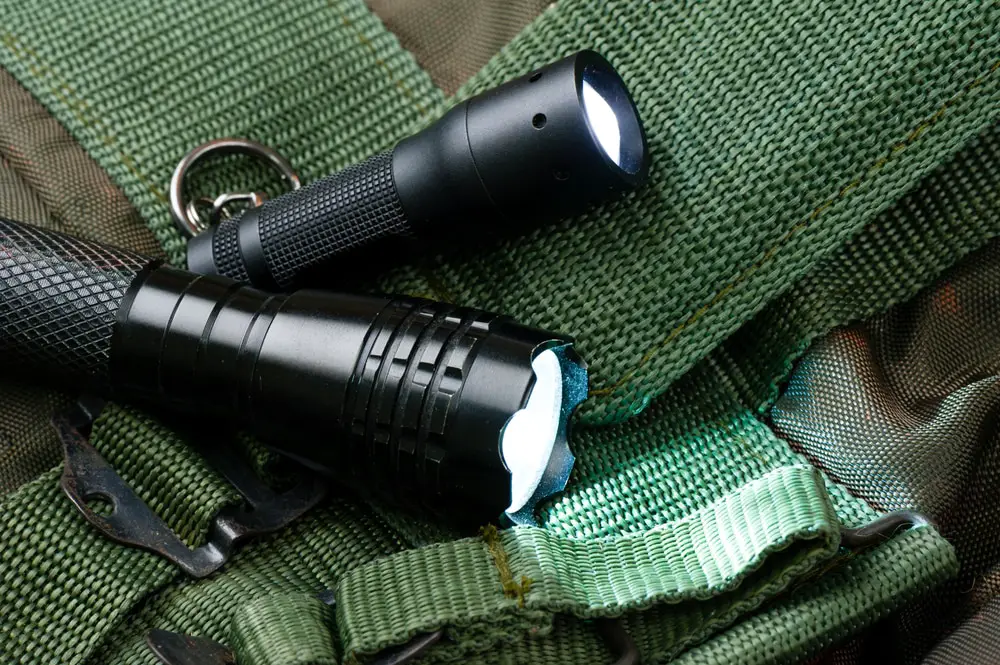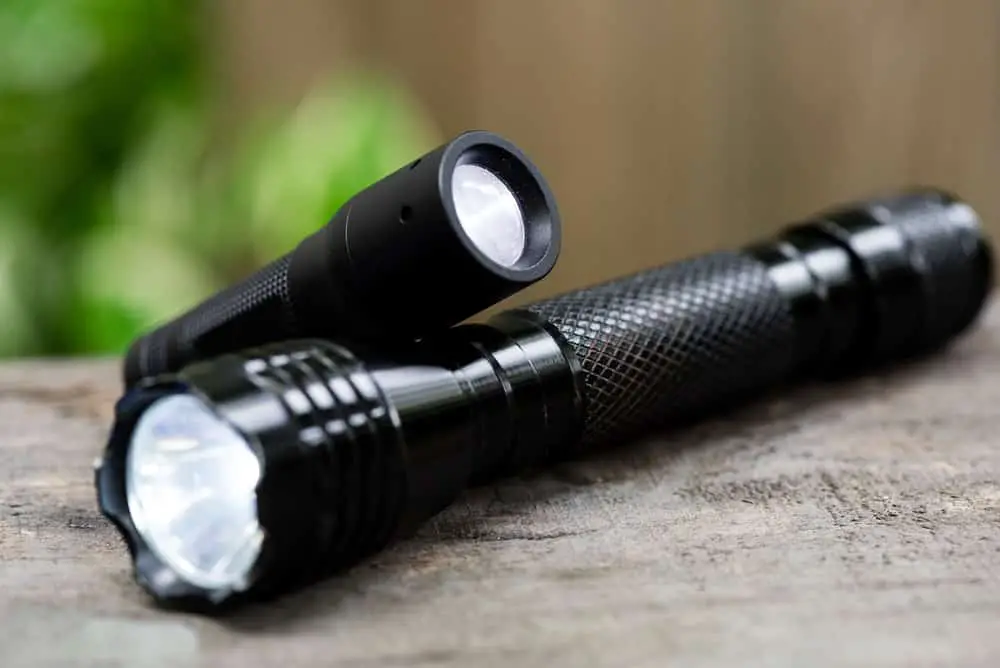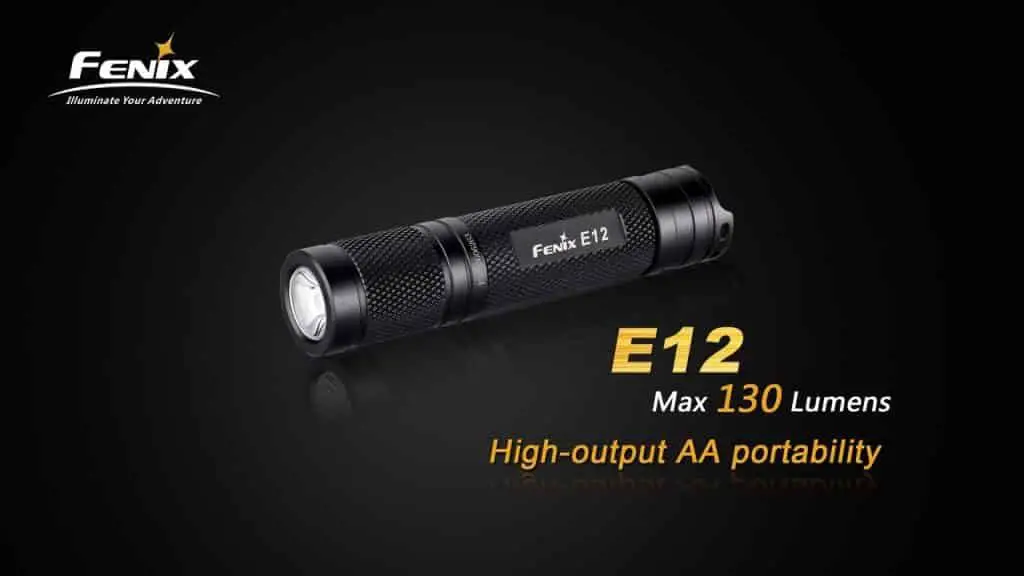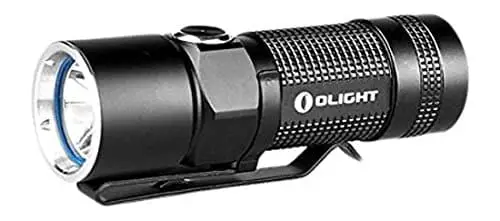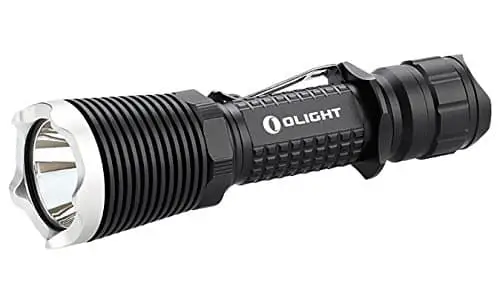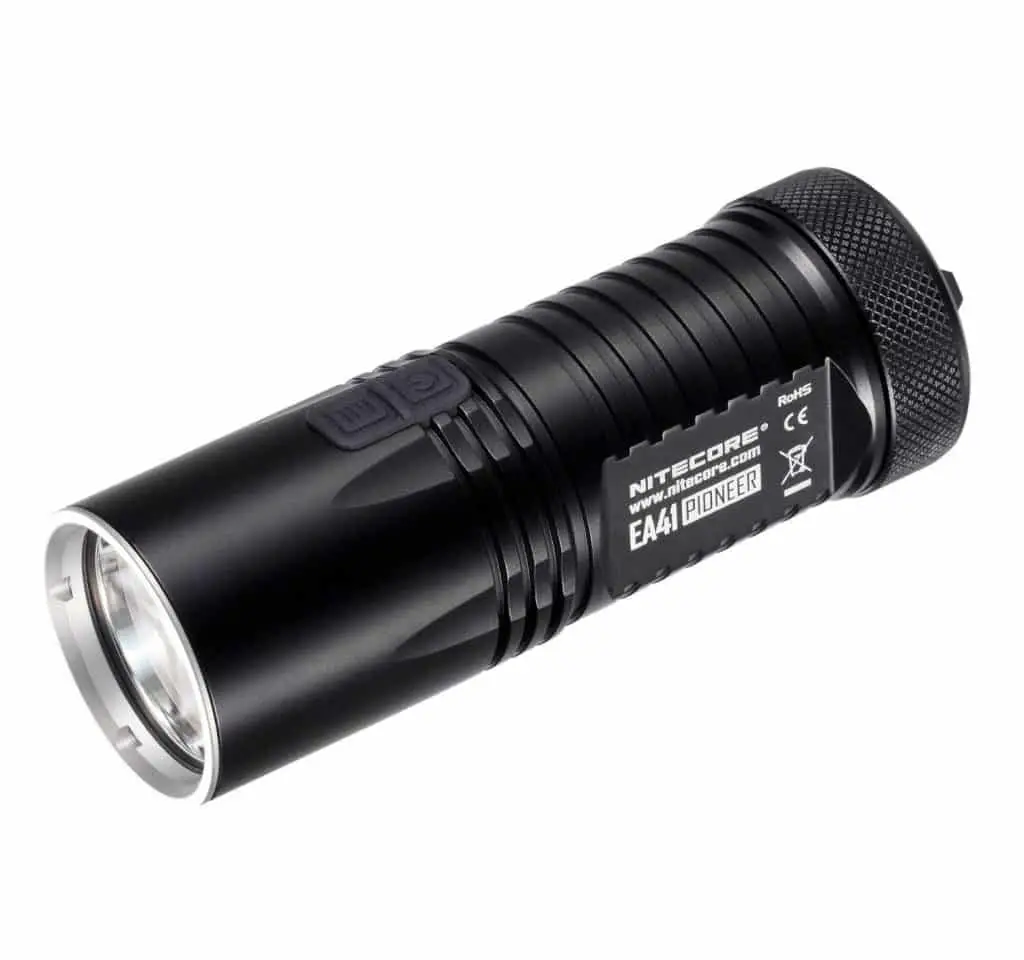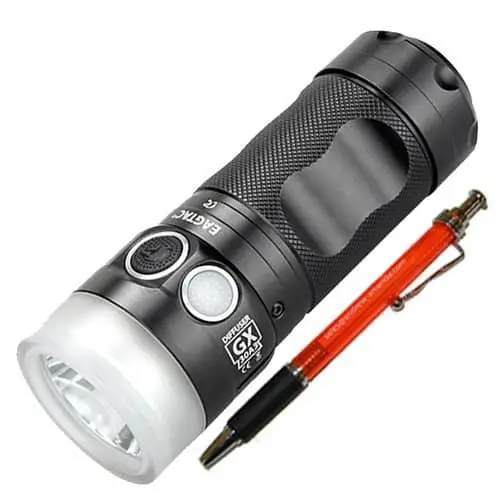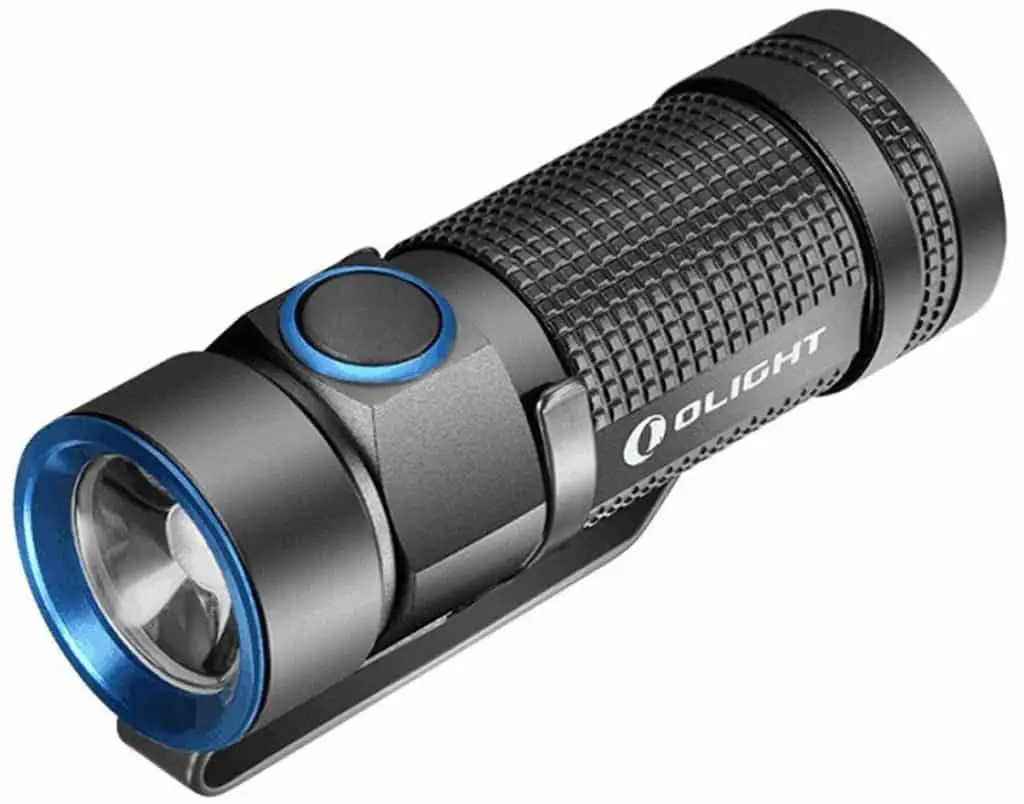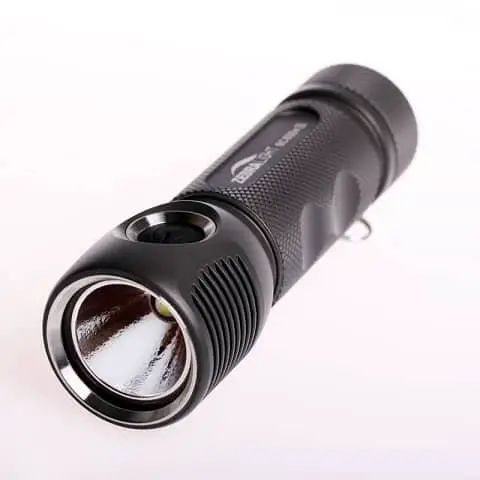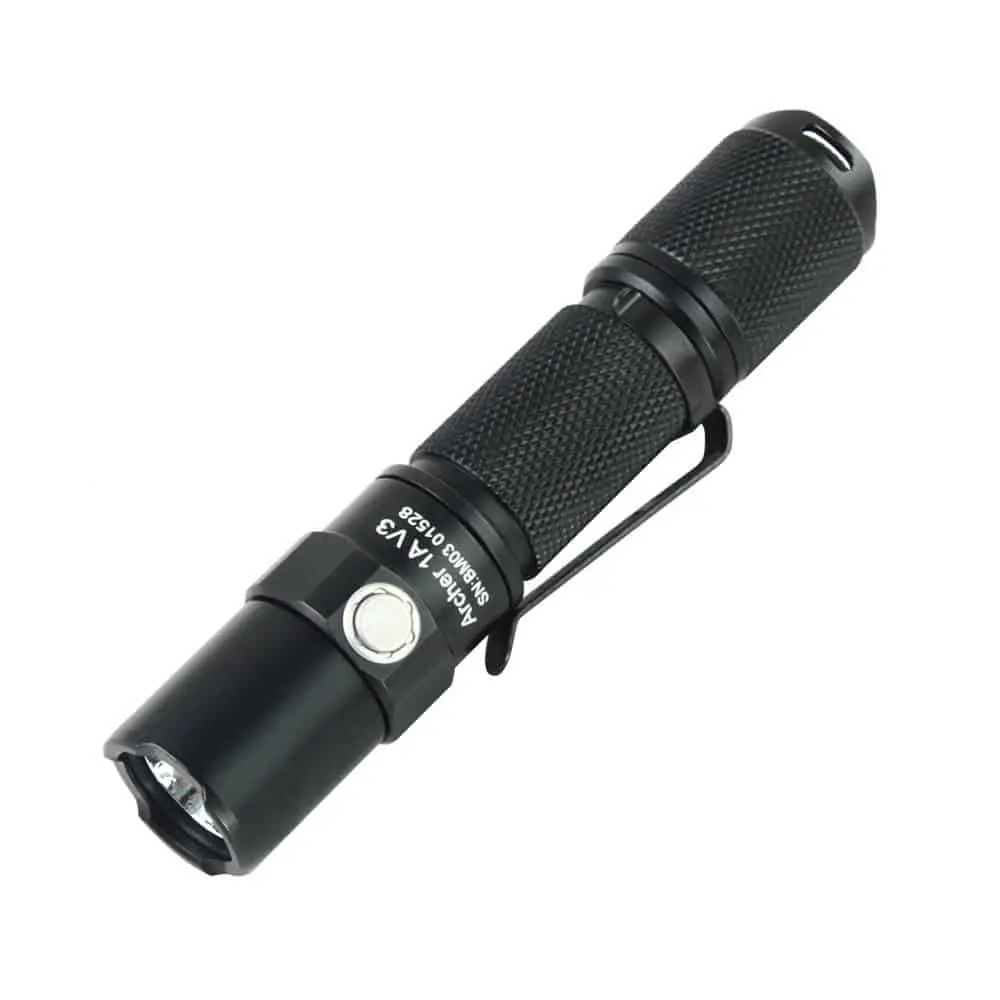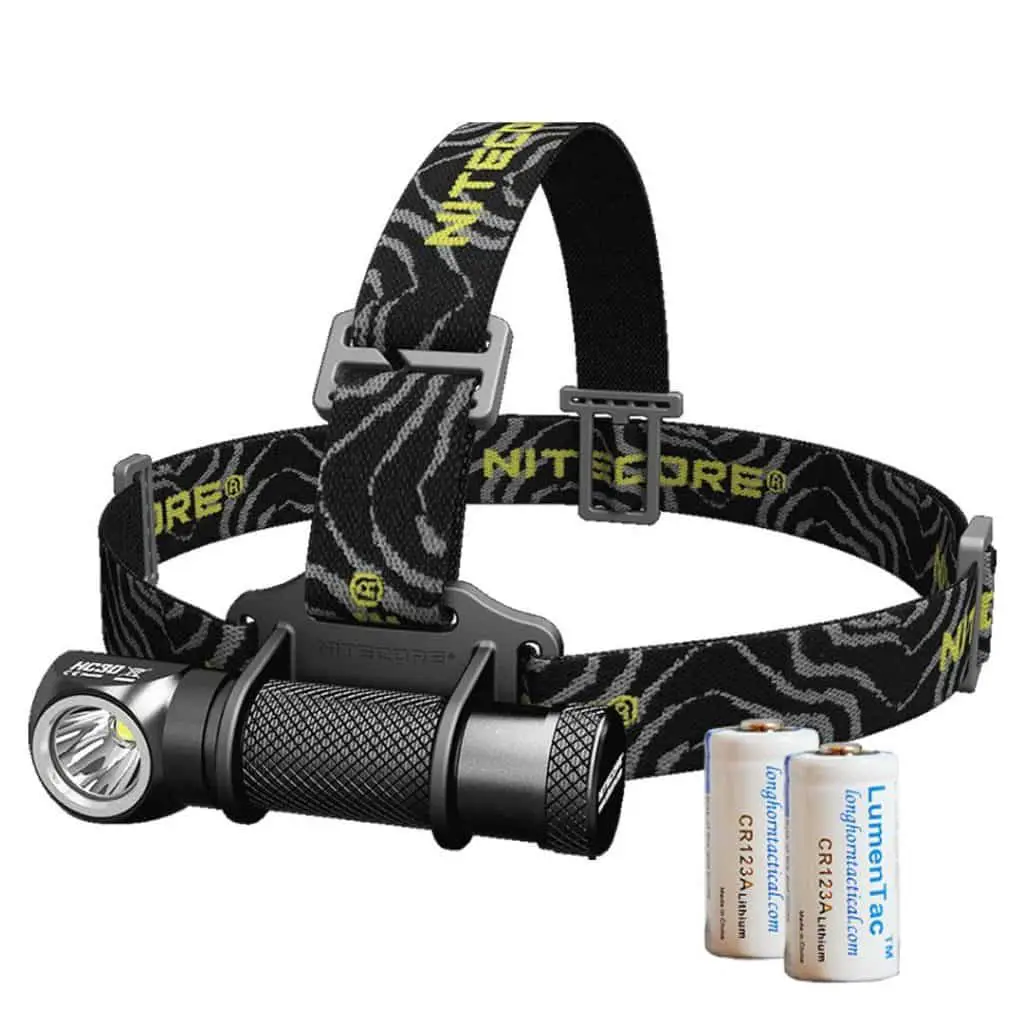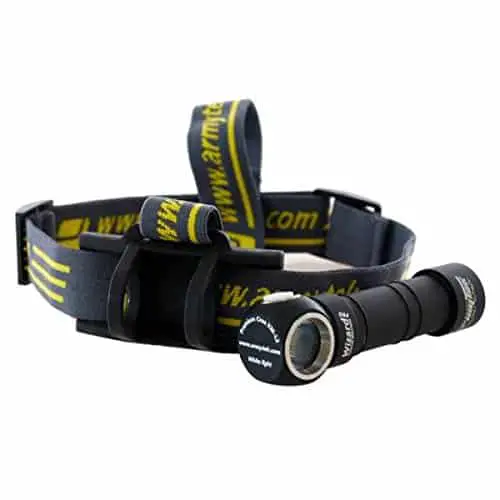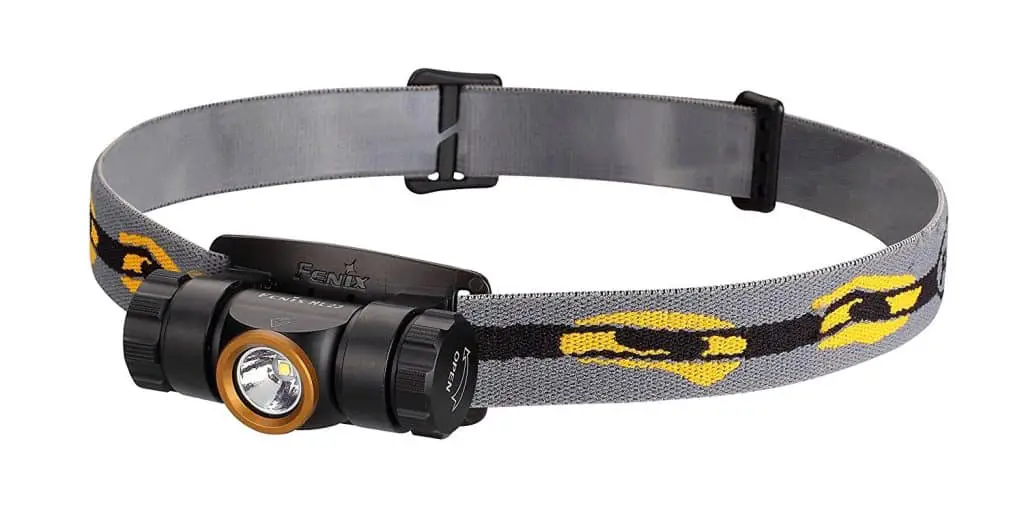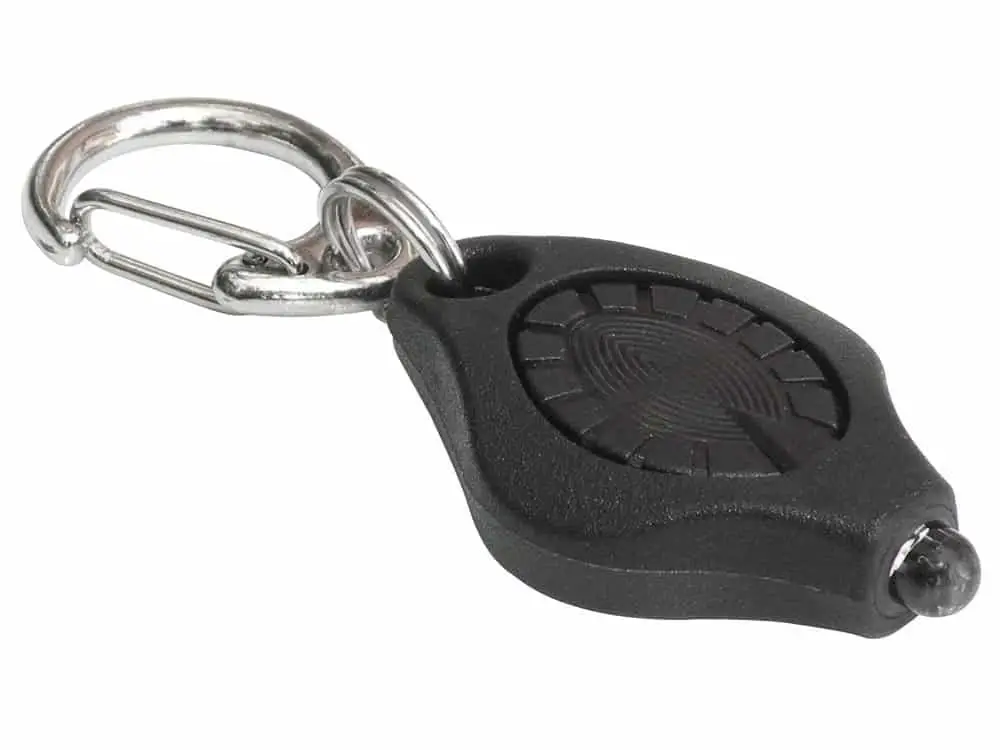Any old flashlight lying around the house just won’t cut it when it comes to assembling the proper survival kit.
Aside from being impractical in the wild, these flashlights won’t last long on the great outdoors.
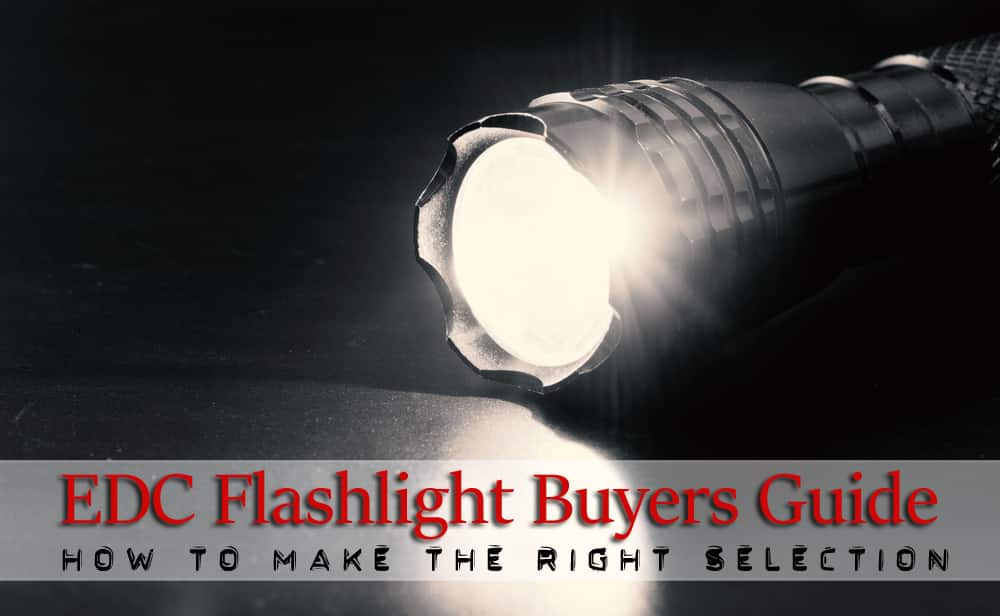
You would want to acquire the best survival flashlight around. But what’s the best EDC (everyday carry) flashlight for survival? We take a look at some important elements of what makes an excellent survival flashlight.
Quick Navigation
Common Uses for EDC Flashlights
Features and Options Break Down
Our Top 15 List of EDC Flashlights
Final Thoughts on Choosing
A. Common Situations and Uses for EDC Flashlights
All people can certainly use a flashlight in almost all kinds of survival situations. The most obvious one is using the flashlight to illuminate a path or an object of interest.
When the power goes out inside the house during a severe storm or natural disaster, or when your car breaks down out of nowhere in the middle of the night, you’d surely appreciate having a portable light you can carry with you.
Survival EDC flashlights can come in sporting different filters, which serve different purposes. Green filters are used for hunting game when it’s dark.
Red filters strengthen your ability to see in the dark. Blue filters can help you read maps better during nighttime. Larger EDC flashlights can act as a self-defense tool in the form of billy clubs.
Imagine being able to fend off the animal and human attackers at night using what’s on your hand instead of fumbling around your pockets or being encumbered with a pepper spray or handgun.
Rounding out the best EDC flashlight features are built-in strobe patterns that can act as a signal in emergencies.
These could be used to notify search parties about your presence and location or call on your hiking party for a quick huddle. It sure beats having to expend your breath and shouting at the top of your lungs, right?
B. Features and Options Breakdown
1) Lumens
A lumen is a measure of how capable a source of light is for illumination purposes. In layman’s terms, it’s how bright your survival flashlight is.
The unit of measure grows stronger as it goes up. So, the more lumens a flashlight has, the brighter the beam of light it can produce.
Most of the flashlights being advertised will list their lumen capacity on the features and on the package. Online, the company will include it in their product description section.
Knowing how many lumens you’ll need is probably the single most important aspect of choosing a proper survival flashlight. After all, what’s a flashlight if it can’t shine a light and help you see more clearly in the dark?
The least amount of measured brightness is around 10 lumens. At the far end, some of the rescue lights being offered in the market reach a staggering 18k lumens! You’ll have to determine how you’d most likely use your flashlight to select the right amount of lumens. Here’s a basic chart:
35 to 100 lumens. EDC flashlights that range somewhere from 35 to a hundred lumens can be used for general purposes on the outdoors. They can be called upon to throw helpful light in a considerable distance. You can buy these flashlight types for camping, hiking, etc.
100 lumens or more. Flashlights that have 100 or more lumens are more towards tactical applications. They are typically carried and utilized by night watchmen, police, security guards and firemen. Flashing 150 lumens of light can cause temporary blindness, while a 300-lumen brightness can cause temporary blindness during the daytime on enclosed areas.
1000 lumens or more. EDC lamps that tout anywhere from 100 to a thousand lumens are primarily used for search and rescue operations. The extra bright beams of light are handy when exploring caves and extreme outdoor applications. The throw of these flashlight types are typically at a hundred feet or more.
So, what this means is you’ll probably need a survival flashlight having 60 or more lumens to be able to disorient aggressors and get a clean escape. Should you wish to stop an attacker dead in their tracks, then 120 lumens should be sufficient to cause temporary blindness.
Overall, lumens aren’t only useful for illuminating, but they can be used in the self-defense aspect of survival as well. Having a handy weapon around, and the ability to see your immediate surrounding environment can put you at a great advantage. What’s more, a lengthy EDC flashlight can be used to strike a person or an animal, giving you precious time to safely escape unharmed.
2) Bulb Type
Incandescent bulbs have been part of our lives since its invention, but it’s time LEDs took over. A LED or light-emitting diode-based survival flashlight outperform incandescent on all measures. They beat out incandescent in terms of efficiency, the output of luminescent brightness, in toughness and battery consumption. They aren’t as fragile as incandescent and wouldn’t easily break when used on outdoor applications.
3) Battery Type
There’s a direct correlation between the size of an EDC survival flashlight and the type of battery it uses. In this case, the bigger the flashlight, the more power it needs. Micro survival flashlights use the kind of batteries used in watches. The larger ones make use of CR2, CR123A, triple-A or AA batteries in order to function.
Standard AA-based flashlights have the advantage because of the nature of AA batteries. Because AA batteries have been around for a good number of years, they are common and can easily be procured. They have become reliable power sources for many electronic gadgets and lighting sources, including flashlights. Moreover, the reliability of these batteries is tried and tested.
Some of these flashlights make use of non-standard battery types. Some of the following include 18650, CR123A, and the Li-ion varieties. CR123 batteries are typically lighter than their counterparts, which can reduce the heft of your EDC flashlight. Lithium batteries are great performers against the colder temperatures.
Not all battery types are the same. Here’s how to determine the best battery type according to your needs:
Survivalists who prefer availability and reliability can pick out EDC flashlights that are powered by AA batteries. If you value efficiency and a powerful, yet lightweight performance, then you can browse amongst survival flashlights that are powered by CR123 batteries.
CR123 batteries pack quite the punch and are lightweight, but the disadvantage is that it comes with a more expensive price tag. They do provide a much more noticeable lumens output, but chances are you won’t be able to buy them at a convenience store. AA batteries can be bought easily in hardware, convenience, and grocery stores.
4) Flashlight Size
Size is an important factor when making an excellent EDC gear. The general rule is that you should keep things small and compact. After all, not everyone wants to lug around a heavy bag full of bulky equipment as they travel outdoors.
You might be surprised to find a variety of different-sized EDC flashlights. There are pen-shaped ones, ones that can be latched on a keychain, and ones that come with their very own pocket clips.
- EDC survival flashlights are categorized into different sizes:
- Micro survival flashlights are 2 inches and below
- Mini survival flashlights are 3 inches and below
- Small survival flashlights are 4 inches and below
- Medium survival flashlights are between 4 to 6 inches
A good compromise between size and brightness is a medium EDC survival flashlight that offers around 100 lumens or more. The small-sized ones definitely have the advantage when it comes to portability, but they contain tiny batteries and provide less illumination.
The rule is that a smaller EDC flashlight is more compact but it won’t be any good if attackers come your way. You will need to bring in another self-defense tool to fend off your aggressors.

5) Shock Resistance
Shock resistance is a must-have for any survival equipment, especially EDC flashlights. Check and see if the product has passed the ANSI FL1 standards. A seal would mean your EDC flashlight will be able to take a beating.
Don’t be confused with the attached details- the numbers mean how high it can withstand a direct impact on a solid concrete platform. More often than not, a shock-resistant survival flashlight means it has an LED as its light emitter source.
6) Waterproof Rating
Being outside means you’ll experience a lot of constant environmental conditions in the course of a day. When it’s dark, raining or flooding, you will surely need a waterproof EDC flashlight to get through the dangers unscathed.
Most high-end quality EDC lights will have waterproof ratings. Most of the others should sport at least a water-resistant rating.
Check the product description or the box for the IPX code rating, which is the standard testing for water-resisting features and capabilities. Bottom line is to expect a waterproof rating on the product listing. If you don’t see one, then move on and find an EDC light that does.
7) Body Construction Material
The survival flashlight has to work whenever you push the on the button. It has to be tough and made or durable material. If you plan on taking it with you each day, make sure that it can withstand the stress of everyday wear and tear.
For this matter, you should take a grain of salt when considering cheaper survival flashlights. Aside from the aspects mentioned above (waterproof, shock resistance, etc), your everyday flashlight should be made of quality materials, and its lens scratch and shatterproof.
Even if you don’t take it out of your bag or pocket, you can be sure that your EDC light will experience bruising, bumping and drops in a regular manner. With this in mind, it’s best to choose a product that is made of anodized aluminum, preferably hard anodized type III material.
Stainless steel and titanium shells are acceptable, but they are typically more costly than one sporting an anodized aluminum construction. All 3 are perfectly fine and each have their own advantages.
Aluminum is the jack of all trades in terms of heft, cost and durability. Stainless steel is tough but it’s also quite heavy. Titanium can be as durable as steel and twice as tough as aluminum while having only around 60 percent more heft than aluminum.
8) Weight
Survival experts will tell you to consider compact items as long as they provide enough utility value. Pocket-sized EDC flashlights are good. Medium-sized survival lights are excellent if they are made of light materials such as titanium or aluminum.
A flashlight that is powered by CR123 batteries is also an acceptable option. Keep the weight factor under 5 ounces if you plan on carrying them in your pockets all day.
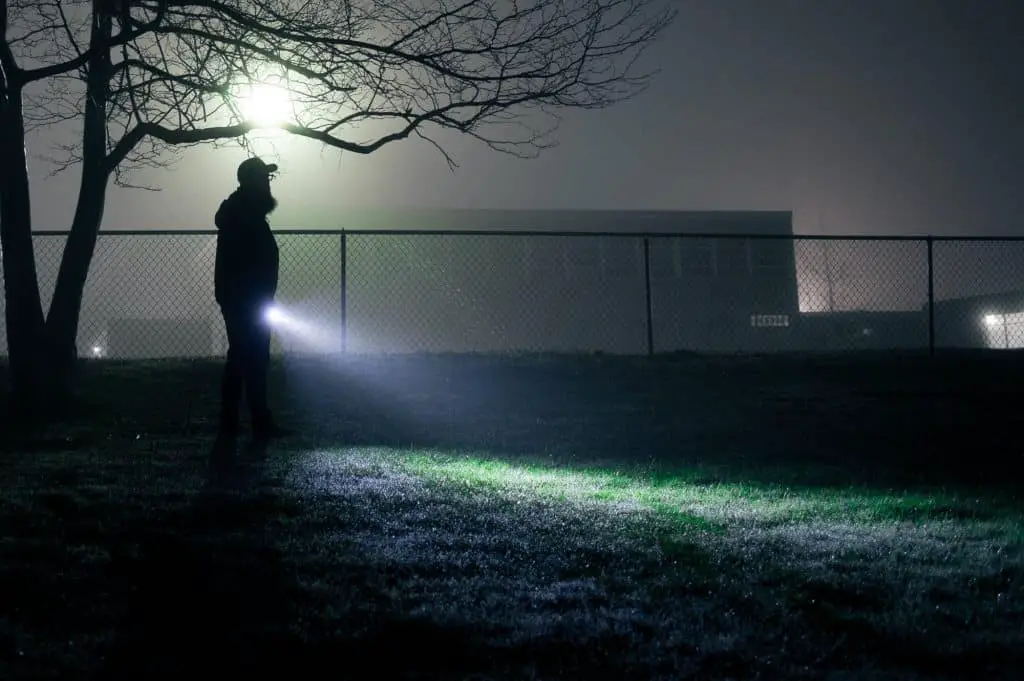
9) Beam Features
An adjustable beam feature is much more useful than you’d think. It makes for a pretty versatile survival flashlight. Tune it to illuminate a wide area for search or travel applications, or tune it to a narrow beam in tactical and signaling situations. Hang it on top of your tent to make it act as a makeshift lamp. There are lots of creative ways to use this feature.
We talked about signaling capabilities earlier, and this time we’ll add some depth to it. You’ll often see multiple modes on the better survival flashlights aside from the usually concentrated beam. Signaling for help, or communicating in far-off distances? Then get an EDC flashlight with ample flash and signal features.
10) Attachment Options
This is a welcome feature for survivalists who want all the bells and whistles with their products. It means the survival flashlight should come with a keyring, carabiner clip, lanyard loop or a pocket clip.
You will want the one that you intend to carry your EDC flashlight with because nothing is more frustrating than having to carry it with the way you don’t want.
C. The Top 15 Best EDC Flashlights for Survival
1) Fenix E12- The Best EDC Entry-Level Survival Flashlight
Everything about the Fenix E12 is a marvel. You may wonder if this gem of an EDC flashlight was made specifically for survival scenarios. The 130-lumen brightness packed in a small shell can be fitted into a keychain for light carrying. This excellent flashlight runs on reliable AA batteries. Finally, the entry price point makes it the go-to light for beginner survivalists and outdoor warriors.
| Fenix E12 | 28.5 grams | 130 Lumens | 40 Hours | Waterproof |
2) Olight S10- The Best Mid-Range Survival EDC Flashlight
Don’t be fooled by the Olight S10’s diminutive size- it has the perfect dimensions for a compact EDC survival kit. Would you believe that a 320-lumen brightness with options for high, low, medium, strobe and moonlight modes are packed inside a 2.7 by 1.9-inch flashlight weighing just 2.4 ounces? All that versatile feature inside a compact form makes it an easy choice.
| Olight S10 | 42 grams | 400 Lumens | 360 Hours | Waterproof |
3) Fenix PD35- The Best Overall Survival EDC Flashlight
The Fenix PD35 boasts an outstanding 1k lumens of light power that can handle everything you throw at it. Basic tasks and tactical operations are made easier and more efficient with this EDC flashlight around. Add to the fact that it has 6 lighting modes and weighs in at just 3 ounces, and you have yourself a winner. If you need extreme and reliable illumination, then the Fenix PD35 is for you.
| Fenix PD35 | 28 grams | 1020 Lumens | 430 Hours | Waterproof |
4) Olight Javelot M23 – Best Main Survival EDC Flashlight
The M23 Javelot clocks in at just under 6 inches, which makes it small enough for everyday carry. The many modes and features also make it a very versatile survival equipment. The most notable achievement the M23 offers is the ability to crank up the lumens to 1020 and have the beam reach an outstanding 477 yards during nighttime. You get a strobe mode and 3 different lighting options- the highest is the aforementioned 1020 lumens brightness for 5 minutes, the second is a 350 lumens illumination for 2 hours and the last is 20 lumens brightness that can last for up to 30 hours.
| M23 Javelot | 150 grams | 1020 Lumens | 30 Hours | Waterproof |
5) Elzetta Bravo – Another Great Main Survival EDC Flashlight

The Elzetta Bravo may very well be the most indestructible EDC flashlight you can find in the current market. The optical lens is of the 7/8 inch thick variety but it sports the most durable material on any survival flashlight. The electronic innards are protected by potting technology, which further cements the product’s overall toughness. That technology isn’t something that’s included in each and every flashlight. The solder joints and circuit boards are sealed and locked in place to prevent dislodging and disconnects.
| Elzetta Bravo | 190 grams | 650 Lumens | 60 Hours | Waterproof |
6) Nitecore EA41 – The Best Standard Size Main Light
Military-grade, hard-anodized HAIII construction coupled with a scratch-proof mineral lens is pretty hard to beat. The Nitecore EA41 is powered by 4 standard AA batteries and has 5 brightness levels, including essential ones such as SOS and strobe options.
| Nitecore EA41 | 170 grams | 1020 Lumens | 400 Hours | Waterproof |
7) Eagletac A3D – Another Great Standard Size Main Light
The Eagletac GX30A3D is a two-in-one EDC flashlight. First, you get illumination that’s comparable to the best survival flashlights running on four AA batteries. The diffuser mode scatters the concentrated light into the surrounding environment, much like a lantern or a candle on demand.
| Eagletac A3D | 454 grams | 1330 Lumens | 100 Hours | Waterproof |
8) Olight S1 – The Best Non-Standard Backup EDC Flashlight
The S1 is the smallest one in Olight’s line of EDC flashlights. The small size keeps an unusually bright beam that might surprise you. Switch the lumens up to 500 for a good 1.5 minutes to stun and cause temporary blindness to an attacker. The Olight S1 offers a moonlight mode aside from the 3 standard illumination options. The .5 lumens brightness will shed enough light where you need it while keeping your night vision sharp.
| Olight S1 | 90.7 grams | 500 Lumens | 600 Hours | Waterproof |
9) Zebralight MK III SC600 – Another Great Non-Standard Backup EDC Flashlight
The 3.8-inch wonder can stun potential attackers and provide enough illumination to light up a small room. You’ll only need a single 18650 battery to power it, which presents some advantages by its lonesome.
| Zebralight MK III SC600 | 64 grams | 1300 Lumens | 7 Months | Waterproof |
10) Thrunite 1A V3 Archer – The Best Standard Backup EDC Flashlight
Choose between 5 modes of illumination when you buy the Thrunite V3 Archer. There’s the standard low, medium and high options, and the Firefly and the Strobe modes. The 1A Archer keeps track of the last illumination mode you used, which comes in handy when you need the last used light mode in a hurry. The unique and intuitive U-shaped construction allows for faster on and off switching. Finally, the medium-sized EDC flashlight sports a strike bezel when things turn ugly and you need to defend yourself.
| Thrunite 1A V3 Archer | 41 grams | 200 Lumens | 17 Days | Waterproof |
11) Sunwayman V11R – Another Great Standard Backup EDC Flashlight
Sunwayman’s V11R is versatile in a different way. Where other EDC lighting products offer different lighting modes, the V11R can be powered using 3 different battery types. You get the regular AA batteries, the 16340, the RCR123A and the CR123A. You can also get the exact lumens specification you want via the MCS (Magnetic Control System), ranging from a battery-saving 1 lumen to a maximum of 570 lumens instead of the usual preset modes.
| Sunwayman V11R | 49 grams | 570 Lumens | 31 Hours | Waterproof |
12) Nitecore HC30 – The Best Non-Standard Survival Headlamp
Slot the HC30 with either the CR123 or the 18650 and choose from 5 pre-set illumination levels- ultralow, low, mid, high and turbo. The highest lumens Nitecore’s offering can reach up to an ample 100, which is more than enough to light the path ahead and beyond. If longevity is what you want, then turn it down to a 1-lumen illumination which can last for more than 300 hours. The 3 concealed settings may be used for emergencies- strobe, SOS and location beacon mode.
| Nitecore HC30 | 40.3 grams | 1000 Lumens | 330 Hours | Waterproof |
13) Armytek Wizard Pro – Another Great Non-Standard Survival Headlamp
Get a maximum of 2.3k lumens when you choose the Wizard Pro from Armytek to light up caves and mountain trails beyond. The bright power output boasts no fluctuations even as the battery loses charge. Check the remaining battery via the multicolored LED indicator. This product was probably made specifically for those who need ample lighting while they work with their hands.
| Armytek Wizard Pro | 59 grams | 2150 Lumens | 35 Hours | Waterproof |
14) Fenix HL23 – The Best Standard Headlamp
Fenix has made it clear that their LED lights can last up to 50,000 hours of usage. You can slot in Ni-MH or alkaline AA batteries to power it up. The Fenix HL23 can be submerged up to 6 feet in water with its IPX-8 rating. Furthermore, this sturdy EDC light can survive careless falls ranging from about 3 feet in height.
| Fenix HL23 | 52 grams | 150 Lumens | 100 Hours | Waterproof |
15) LRI Photon Freedom – The Best Multiple Carry EDC Survival Flashlight
Why take only one when you can take multiple? The LRI Photon Freedom allows you just that. Put up one in every area where you need ample lighting. This survival flashlight clocks in at just 1.5 inches, which makes it one of the smallest offerings in the current EDC market. The light is nothing to sneeze at- it can produce a steady 4.5 lumens lighting in the course of around 12 hours using just one battery. The 4 different modes include a helpful Morse Code option. Did we mention that it’s a keychain light-sized flashlight?
| LRI Photon Freedom | 7 grams | 6 to 7 Lumens | 8 Hours | Waterproof |
D. The Final Word on Choosing The Best EDC Flashlight For Your Needs
The 15 EDC Lighting options should give you an idea of how you would use a survival flashlight, and the specifications you’ll need to make it a worthy everyday carry equipment. An excellent EDC flashlight should be easy to carry around without hampering your movement and style.
You shouldn’t just settle for cheap ones that could fall apart within one week of use. Rather, look for quality and the features you will need down the road. The best EDC survival flashlight is one you can rely on in times of emergencies.


